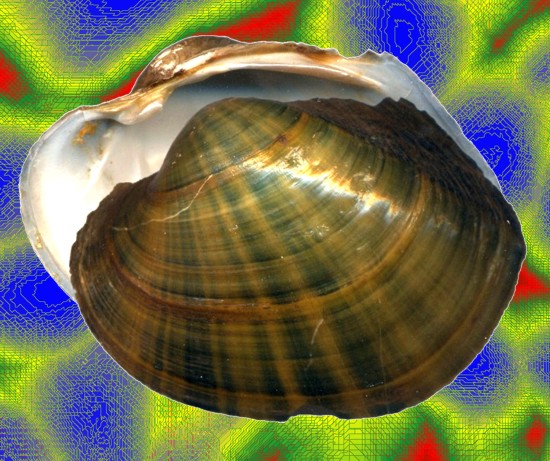| Page last updated
4 May 2004 |
Mussel of the Month
The May 2004 Mussel of the Month is Lampsilis cardium. L. cardium (= L. ventricosa) is widespread in eastern North America and is one of the characteristic species of the formerly glaciated areas of the Great Lakes, Upper Mississippi and Ohio basins.

UMMZ 130005. Mississippi River, Wabash Co., Minnesota, U.S.A.
In eastern North America, the distributions of freshwater mussels (and other organisms) have been greatly influenced by the retreat of the glaciers that filled the upper Mississippi and Great Lakes basins until around 10,000 years ago. As the ice melted back, lakes and streams were uncovered and repopulated from unglaciated refugia whence the mussels weathered the Ice Age. Lampsilis cardium, along with a handful of other species, was among the first mussels to invade these new habitats, based on their fossil record and widespread distribution.
Classification:
Phylum Mollusca
Class Bivalvia
Subclass Palaeoheterodonta
Order Unionoida
Superfamily Unionoidea Rafinesque, 1820
Family Unionidae s.s.
Subfamily Ambleminae Rafinesque, 1820
Tribe Lampsilini von Ihering, 1901
Genus Lampsilis Rafinesque, 1820
Species Lampsilis cardium (Rafinesque, 1820)
For more information on Lampsilis cardium and the post-glacial distribution of freshwater mussels, check out the following:
- Graf, D.L. 1997. Northern redistribution of freshwater pearly mussels (Bivalvia: Unionoidea) during Wisconsin deglaciation in the southern Glacial Lake Agassiz region: a review. American Midland Naturalist 138: 37-47.
- Graf, D.L. 2002. Historical biogeographic and late glacial origin of the freshwater pearly mussel (Bivalvia: Unionidae) faunas of Lake Erie, North America. Occasional Papers on Mollusks 6: 175-211.
- van der Schalie, H. 1939. Distributional studies of the naiades as related to Geomorphology. Journal of Geomorphology 2: 251-257.
- van der Schalie, H. 1945. The value of mussel distribution in tracing stream confluence. Papers of the Michigan Academy of Science, Arts and Letters 30: 355-373.
|